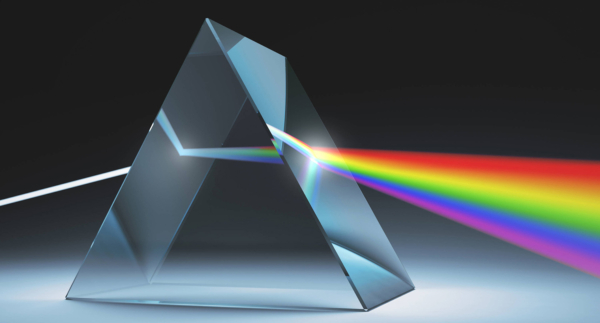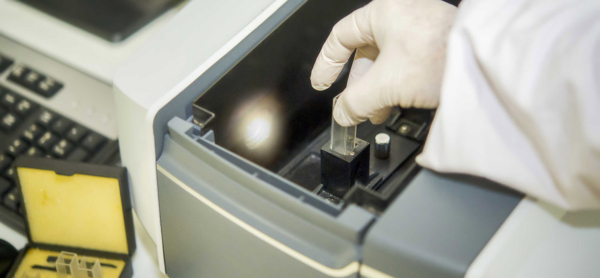Visible light is a combination of all the colors of the rainbow. A spectrometer disperses light into these primary colors and measures what colors the light is consisting of. With our human eyes we can also perform spectral measurements as well, but our eyes can only detect three primary colors (red, green and blue). A spectrometer on the other hand can detect up to a thousand independent colors. Each of these colors is indentified by a physical property called “wavelength”. The result of the measurement is a diagram that shows how much of each wavelength is present in the light that was measured. This is called a spectrum.
If you use a spectrometer to examine the light that was reflected or emitted by a sample, you can draw many conclusions about the composition of the sample and the chemical processes taking place inside. For example, you can use a spectrometer to:
- check the composition and age of food and beverages
- detect counterfeit products
- find hazardous materials like explosives or drugs
- monitor chemical processes in a production plant
- measure environmental pollution
Portable Spectroscopy
Traditionally, spectrometers are huge tabletop devices used by scientists in the lab to perform chemical analysis. If you needed to make a measurement on a sample, you usually had to send the sample to a lab for detailed analysis and then had to wait for a few days to get the result.
On the other hand, much smaller spectrometer have been available for some time now. These compact devices are small enough to be built into portable devices and industrial sensors.
This enabled portable instruments that can be carried to the point of the sample, allowing instantaneous results instead of having to send samples around.
Huge progress has been made in the field of portable spectroscopy in recent years. Many analysis technique were successfully brought from the lab to the field. Still, many obstacles remain that limit the widespread application of spectroscopy in everyday life. To address these challenges, a new generation of spectrometers is needed.
For a detailed overview of portable spectroscopy techniques see this review paper by Richard A. Crocombe.
Fields of Application
Spectroscopy has a vast array of applications in numerous scientific and technological fields, including:
- food safety and quality
- chemical analysis
- environmental monitoring
- DNA fingerprinting
- agricultural monitoring
- astronomy
- geology
- material science
- semiconductor characterization


